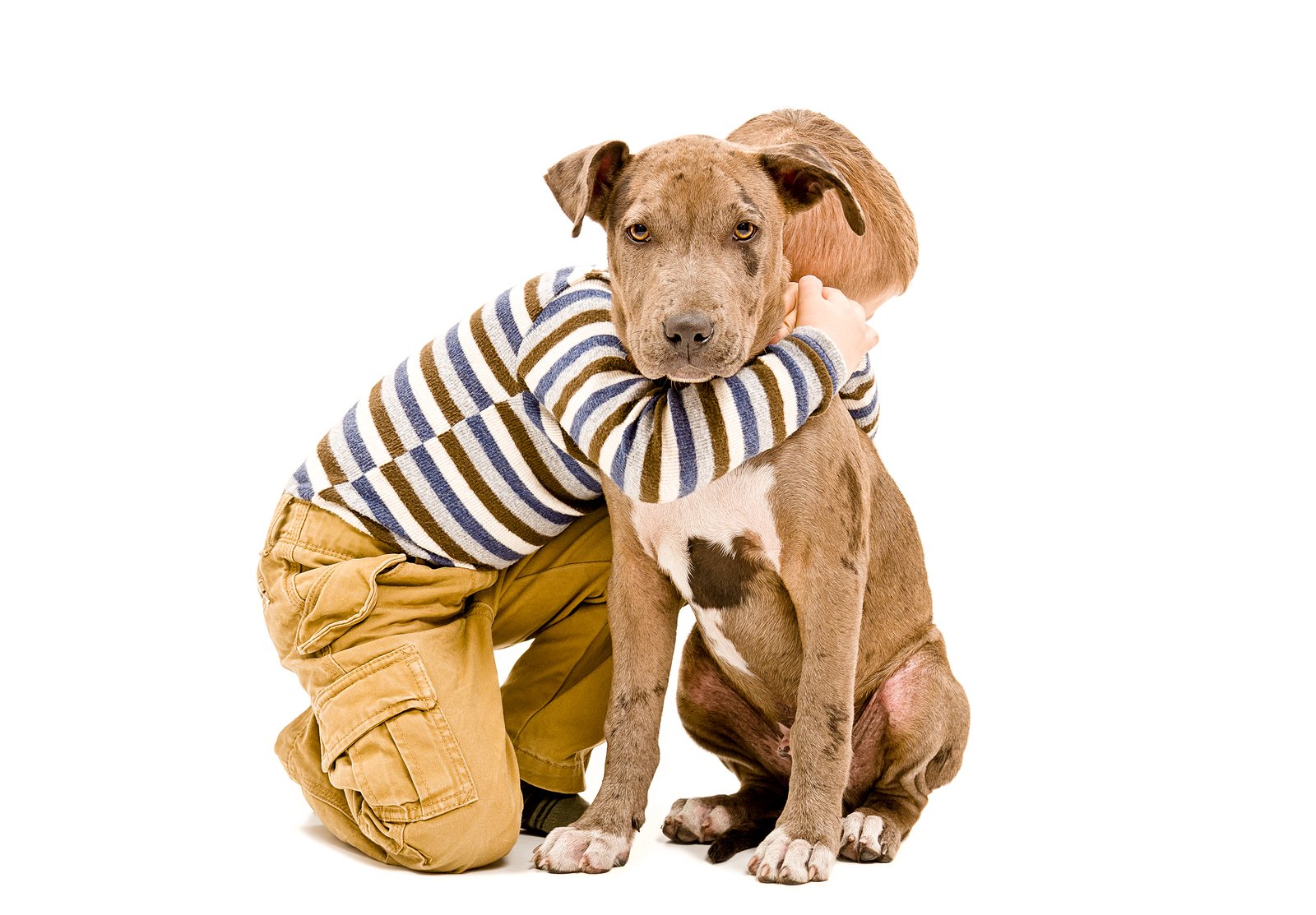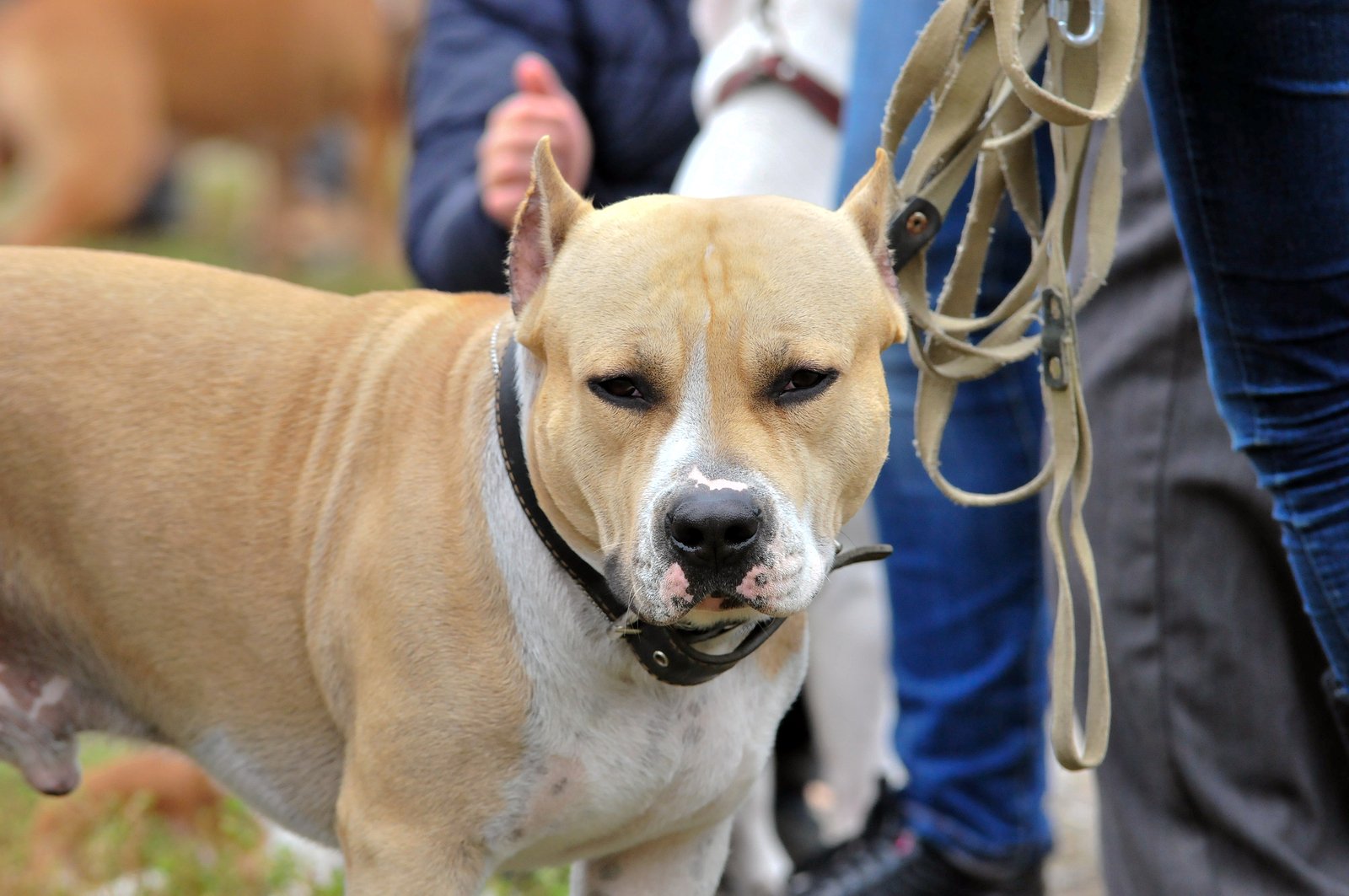BIGSTOCK


It’s very confusing. On one hand a video of a little girl feeding a half dozen sweet-natured, velvety-looking pit bulls goes viral, sending a message that the breed does not deserve the reputation of aggressive biters and killers. On the other, you hear stories of pit bulls attacking and taking the lives of other dogs—and people. Cities and states enact legislation either banning them outright or allowing them only with strict controls. Where does the truth lie about how safe or dangerous pit bulls really are? To find out, we spoke with Nicholas Dodman, BVMS, DACVB, the head of the Animal Behavior Clinic at Tufts University and a world-renowned veterinarian who has frequently been called on to testify and speak about dog behavior and legislation both in Washington and abroad.
Your Dog: Why is it that some pit bulls appear to be harmless, lovable dogs while others, scary predators?
Dr. Dodman: Within any breed there’s a bell curve that describes behavior. At one end of the curve, a dog may not exhibit the characteristic traits of his breed very much at all. But when you start getting past the middle, the dog acts as expected. Either way, though, the inclination for a dog to act according to the characteristics for which he has been bred are in there, even if they aren’t readily apparent.
Your Dog: What do you mean?
Dr. Dodman: Dog breeds are genetically encoded to behave a certain way; it’s in their DNA, and people are responsible for that through breeding choices put into play as many as hundreds of years ago. No one will deny that a border collie is naturally inclined to herd, that scent hounds spend half their lives with their noses on the ground, and that Chesapeake Bay retrievers like to swim. So if you had a water-bound breed who was never particularly into swimming but one day found himself in the water and swimming happily and with gusto, it wouldn’t come as a shock. Yet there are stories of pit bull owners saying their dog was always docile and friendly up until the moment it wasn’t and attacked another dog, and they’re shocked by that when they shouldn’t be.
BIGSTOCK


Your Dog: Why not? Are pit bulls bred to be aggressive to other dogs?
Dr. Dodman: Pitbulls are not bred for that reason today, but it’s still in their genes, their molecular makeup. You have to keep in mind that pit bulls are descended from bull-baiting dogs in England—”bull dogs” who were bred as many as 1,000 years ago to bite and hold bulls, bears, and other large animals around the face and head. Watching this behavior for sport was banned in England in the 1800s, so people then used bull-baiting dogs to fight other dogs for entertainment. They were bred with smaller, quicker terriers to produce a more agile and athletic dog better configured for fighting animals of their own species. Those are the forerunners of today’s pit bulls.
What it comes down to is that pit bulls were selectively bred for a violent activity that is now a felony in all 50 states—dogfighting. Not only were they bred to fight, they were also bred to stay in the game. In fact, breeding them for ‘gameness’ meant breeding them with the will to fight to the finish. People who bred them wanted the strongest, most determined, most non-giving-up dog. That was the goal—this light, limber fighting machine. That’s why you hear stories of people punching their pit bull in the head to get them off another dog and the pit bull still won’t let go. They’ll fight through a broken limb, gouged-out eye, or other horrific injury.
Your Dog: And they can’t release once their jaw locks down, right?
Dr. Dodman: That’s a myth. A pit bull is physically capable of releasing his grip with his jaw; there’s no locking mechanism. It’s his genetic predisposition to bite and hang on—a formerly valued propensity—that has led to the “jaw locking” misconception. Again, not all pit bulls exhibit this behavior or at this intensity. But the genetic propensity remains in some. That’s why it’s useless to speak of one anecdote in which a pit bull was as tame as a pussycat and another in which a pit bull proved to be a killing machine. You’re always going to get the opposite argument that way, but there’s a truth down the middle.
If you look at the human population, men tend to be taller than women. Yes, you can say, ‘I saw a man the other day, and he was only five feet six inches, and on the same day I saw a woman who was five feet nine inches, and that might be true, but it’s not accurate to say, from that observation, that men are shorter than women when you consider averages—generally men are taller than women, and that’s a fact. Same with pit bulls. Some might be darling, but it’s not what they were genetically coded for. According to the Canine Behavior and Research Questionnaire (CBARQ), a validated canine behavior questionnaire, while pit bulls are no more likely to bite people than other breeds of dog, they are more likely to get into fights with other dogs. No surprise there.
Your Dog: But if pit bulls are not the breed responsible for the most dog bites to people, why are they the ones getting the bad rap?
Dr. Dodman: It’s that their bite is so damaging; it is a biological imperative for them to win. The number one biter in the U.S. is the German shepherd. But his biting style is typically not a full crushing bite. Shepherd dogs who bit sheep with a full crushing bite were often put down as ‘sheep worriers’ who took their job too seriously, so that kind of bite is not really their style. German shepherds tend to nip and run—what I call a cheap shot. When I go to my consulting room to greet a client and the assistant tells me what breed I’m going to see, I have a pretty good idea of what I’m going to be dealing with. If it’s a German shepherd, I have a feeling it’s going to be some sort of fear aggression. I’m not going to see a dog who runs up to another dog and kills it. Pit bulls have been prized for that full, crushing bite in the past—and to withstand crushing injuries themselves yet continue at their task.
Your Dog: Are a lot of people really being killed by pit bulls?
Dr. Dodman: No. The number of lethal attacks on people is much less than some people realize. By one calculation, in the nine-year period stretching from 2005 to 2013, pit bulls killed 176 Americans. And the number of real pit bulls in those data may be much less than that because people have a hard time identifying them properly. Anyway, compared with the number of Americans who kill each other in homicides, the number of deaths due to pit bulls and other breeds is relatively small. Pit bull attacks on people are quite rare.
The reason for the lowish incidence of aggression by pit bulls to people is that pit bulls who routinely attack people are usually put down. No one could live with such a dog. So by artificial selection, unwittingly or not, we’ve been selecting against breeding pit bulls with the predilection to attack people, but, as mentioned, their tendency to get into dog fights is still there, at least in those on the right hand side of the bell curve.
When people come to see me about their pit bulls, it’s usually because their dog is aggressive toward other dogs. That’s where most of the problem lies. And those who do come to my office are the ones who tend to be chagrined and in shock because their pet pit bull has never acted that way before; but the dog’s natural inclination had always remained there in the background. So the problem is not the frequency with which pit bulls attack other dogs, or even people. It’s that if they do go off, the consequences of the aggression can be serious. I repeat: there is empirical evidence that pit bulls are no more likely than other breeds to bite or show other aggression toward people, although they top the chart for lethal dog bite attacks. They are, in addition, more likely to show aggression to other dogs, and that’s a fact.
One man told me he had a pit bull who was a good dog, but there was an incident where he left his gate open, and the dog attacked a poodle. The dog latched onto the poodle’s midriff and clamped down. All this occurred while the poodle’s owner was trying to pull his own dog away. The owner of the pit bull went and got a wrench, then banged his dog on the head a few times, but it didn’t work. He finally pulled off his dog by putting garden shears sideways between the dog’s teeth and then prying the dog’s jaws off the poodle. The poodle came in to Tufts and had to have his intestine resected but died two days later.
This is just an anecdote, like so many other anecdotes, but it’s a common theme. ‘My pit bull was sweet and gentle until he wasn’t.’ Not every single pit bull will go off at some point. There are real softies within a breed, so called nanny dogs, who just lie around with the children and look after them. But with pit bulls, there remains this little thing in the back of their psyche because of their genetic scaffolding. It’s not a great shock to me if one finally does exhibit the genetic inclination with which he is imbued.
You know, some insurance companies charge more for homeowners’ liability insurance if there’s a pit bull in the house. Insurance companies have absolutely nothing against pit bulls. It’s all just numbers and spreadsheets to them. And what the spreadsheets show is that if there is going to be a serious attack by a dog, the chances are greatest that that dog will be either a pit bull or one or two other notorious breeds. There’s no judgment in that. It’s just statistics, like for homes with a pool. Insurance rates are higher because the numbers show that with a pool in the backyard, people sometimes fall into them and drown. That’s not a referendum on pools. It’s a reflection of a fact.
Your Dog: More than 700 U.S. cities have breed-specific legislation, often aimed at pit bulls, including muzzling in public, mandatory sterilization, liability insurance, and so on. Do you agree that legislation on pit bulls is in order?
Dr. Dodman: I’m against legislation banning any breed. Because really, it’s not addressing the problem. There will always be unscrupulous dog owners who want the dogs that they train to be aggressive. They do things like stick gunpowder up the dog’s backside, which apparently hurts, and it makes the dog mean. Particularly if the dog already has the genetic potential to be ‘mean,’ they can trigger that propensity into
scary reality.
If you ban pit bulls or forbid their mating, people who want a scary, mean dog would just move to another breed. You can get even bigger and more powerful dogs than a pit bull, so they will just gravitate toward them instead. In New York, where drug dealers once used pit bulls, they began to change their preference, going with the cane corso, which is larger, more intimidating, and some say just as fierce. So there’s no point in breed bans. You can always just replace one with another. If you have this raw material, this ball of moldable clay, and the wrong type of owner, a very aggressive dog may be the result, whether it’s a pit bull or a cane corso or some other breed whose raw material includes a propensity for aggression. Some people want to show people they own and control a tough dog and live vicariously through their dog’s threatening image; they want to ‘pack heat’ via their dog, so to speak.
Your Dog: Is there anything that can be done?
Dr. Dodman: Yes. The majority of people who adopt a pit bull are not looking to train a living weapon. Most probably just go down to the shelter to take home a pet dog and they come across a pit bull or an obvious pit bull mix who appears very sweet. They just want to provide the animal with a loving human family. That’s fine. But what you need is for someone adopting a pit bull to be educated, to have realistic expectations, to engage the dog in socialization, and to have proper management. That’s the best way to end up with a well-adjusted dog who can get on in the world.
Your Dog: What do you mean by ‘proper management?’
Dr. Dodman: Proper management begins at the kennel, accepting the fact that the dog, as docile and submissive as he might be sitting alone in a cage, can have certain tendencies. It means saying to yourself, ‘I’m going to be realistic and be a good leader.’ It may mean passing on a certain pit bull if you know you’re not sure you can be a strong leader who can lay down clear rules, or perhaps if you have small children. Some dogs, pit bulls included, can get very aggressive toward others to protect the children, or, conversely, feel annoyed by the jerky, sudden movements of small children and may not want to be hugged by them or squished by them.
If you are a strong, firm leader and treat your pit bull with kindness, never using aversive training techniques like yelling and or jerking choke or prong collars (because aggression begets aggression); and if you socialize the dog with other dogs and with people; and if you use precautions in public including a collar and lead and, if necessary, a muzzle, you have a reasonable chance of ending up with a good and safe dog. You can especially make an impact if you get the dog as a puppy and teach him through proper socialization that other dogs are his friends. Over time, responsible owners of pit bulls could actually change the cultural if not the genetic bell curve and have a bigger swatch of dogs of that breed who are safe around other dogs, and around people.
Your Dog: Thank you. This was incredibly edifying. It’s clear that pit bulls are not an all-or-nothing proposition.
Dr. Dodman: It’s true that with education and proper training, there can be a place for certain pit bulls in society. But you’re going to get heated responses no matter what you print. Passions run high on this issue.





